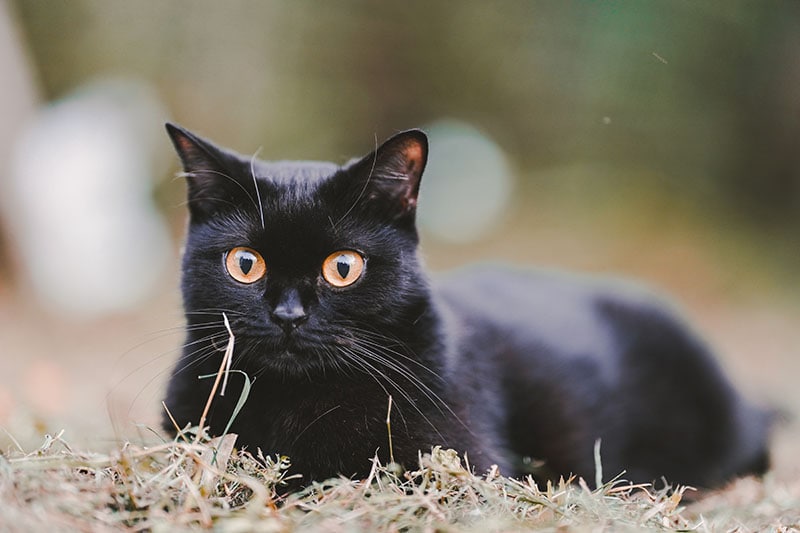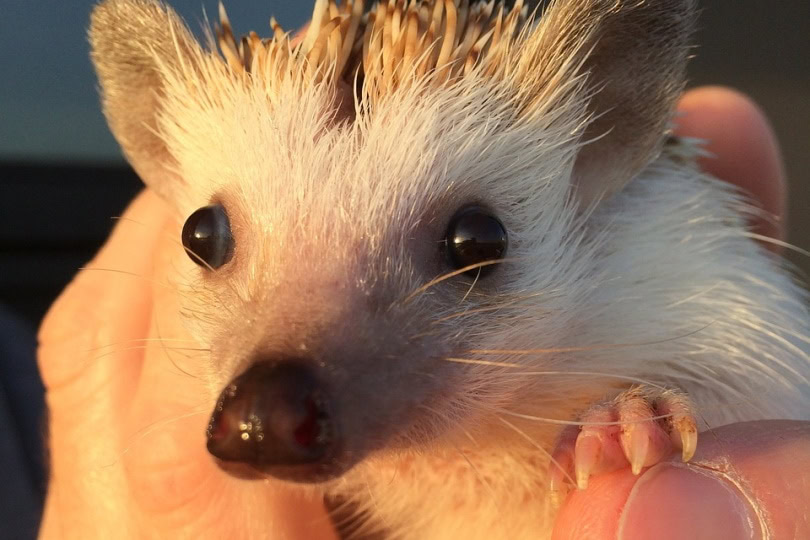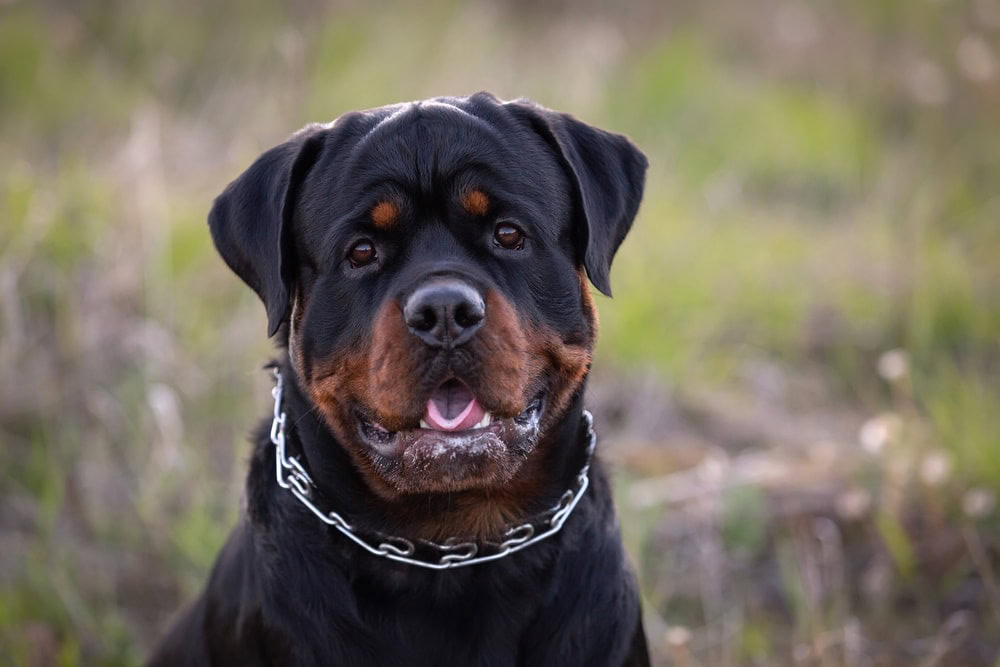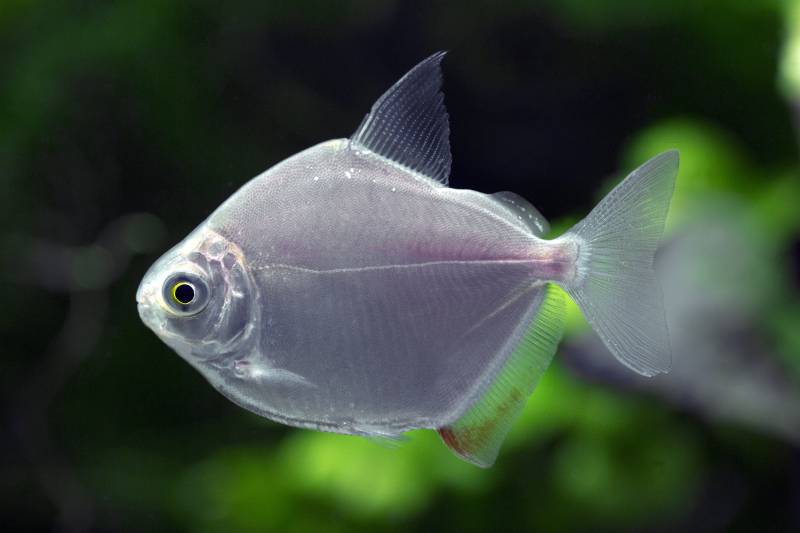Click to Skip Ahead
Black Scottish Fold cats are cute yet mysterious characters that cause controversy in the cat-fancying world. These owl-like cats have a clear history and ancestry, making them an unusually well-documented breed. Their signature folded ears result from a genetic abnormality that makes them more and less desirable in different circles. Read on to discover more about the black Scottish Fold and its origin.
Breed Overview
Height:
8–10 inches
Weight:
6–13 pounds
Lifespan:
14–16 years
Colors:
Black, black smoke
Suitable for:
People who want a close companion, those that work from home or who have other pets, and owners familiar with the breed’s potential medical problems
Temperament:
Loving, sweet-tempered, softly spoken, friendly, gets along with other pets
The Scottish Fold can come in several color variations and coat lengths. The all-black or solid black Scottish Fold is recognized alongside the black smoke, a dark black cat with a bright white undercoat. These variants appear in longhaired and short-haired varieties and can have both folded and straight ears!
Black Scottish Fold Characteristics

The Earliest Records of Black Scottish Folds in History
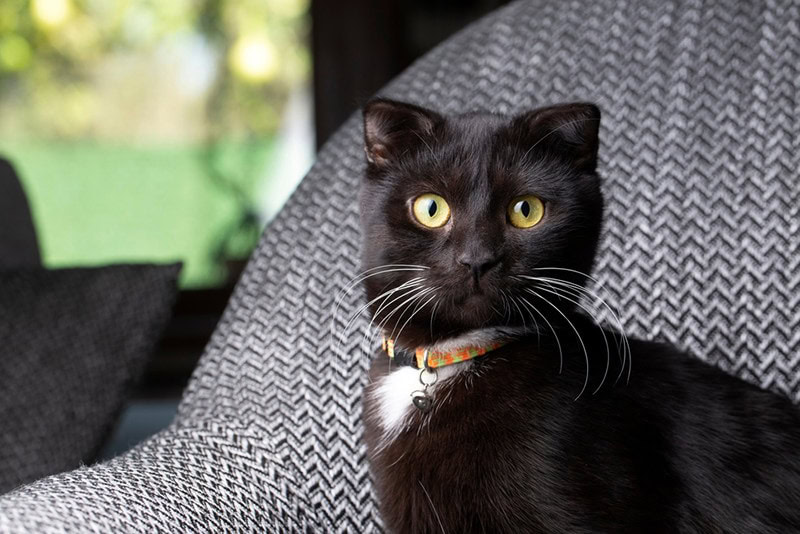
The Scottish Fold was created in 1961 when the neighbor of a farmer 1 (William Ross) noticed a beautiful cat with a rounded head and folded ears named Suzie roaming around the farmhouse in Tayside, Scotland. Entranced with the cat, William asked the farmer if he could have one of Suzie’s kittens. William adopted one of her kittens, another white folded-eared cat he called Snooks, and used it to mate with other cats to continue the Scottish Fold line. In 1970, geneticist Pat Turner sent three of William’s kittens to a university in Massachusetts, where the cats quickly attracted lots of attention and awe.
How Black Scottish Folds Gained Popularity
In the UK, the Scottish Fold, in all of its myriad colors, was an instant hit. In 1969, William Ross began his cattery, the Denisla. A breeding program from the cattery was then started using folded-eared Scottish Folds, farm cats, and William’s British Shorthairs. With the help of geneticist Peter Dyte, the popularity of this special cat exploded. However, new registrations with the Governing Council of the Cat Fancy (GCCF) in the UK of Scottish Folds (including black Scottish Folds) were closed in 1971 2, making the popularity of the cats in the UK plummet.
The breed began to skyrocket in the US when three of the 42 cats bred by William and Pat were sent to the Carnivore Genetics Research Center in Massachusetts. The center discovered that the gene that caused the folded ears of the Scottish Fold was a rare spontaneous mutation. Their popularity in the US remains steady, with celebrities such as Taylor Swift and Ed Sheeran owning Scottish Folds.
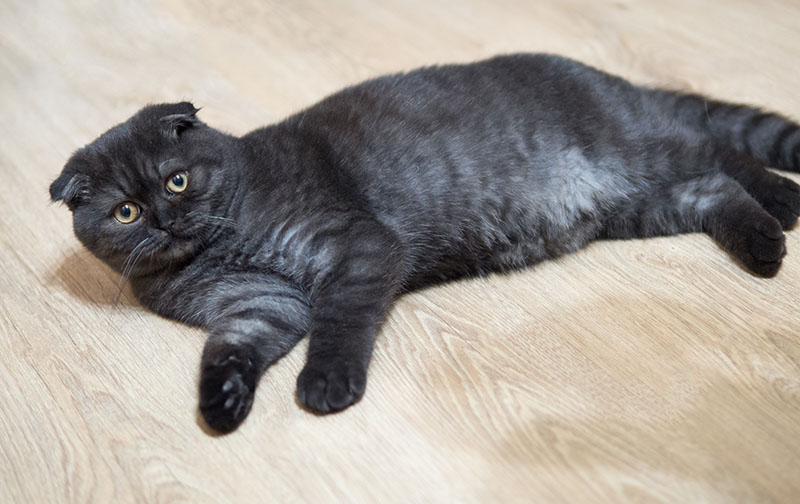
Formal Recognition of Black Scottish Fold
The Black Scottish Fold was first recognized by the GCCF in the UK in 1966, but the registration list was closed shortly afterward in 1971 due to concerns over genetic abnormalities and welfare.
In the US, the Cat Fancier’s Association (CFA) recognized the Scottish Fold for championship status in 1978, and they recognized the long-haired variant in 1979. However, only cats with folded ears can be shown in the championship ring! The International Cat Association (TICA) recognized the Scottish Fold in all colors in 1979.

Top 4 Unique Facts About Black Scottish Folds
1. Black Scottish Folds Are Born With Straight Ears!
All Scottish Fold kittens have straight ears until they are about 4 weeks old! The cartilage in the ears collapses at this age if the “folded ear” gene is present, giving the ears their signature rounded, teddy bear-like appearance.
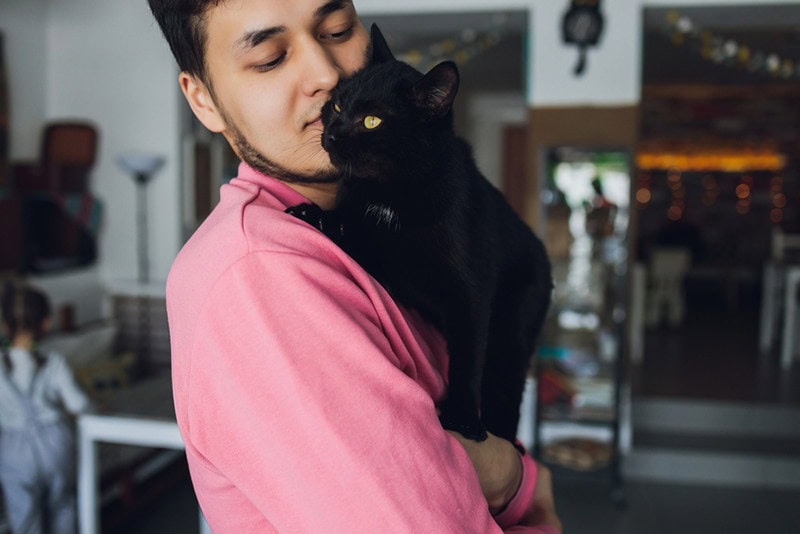
2. All Scottish Folds Suffer From Some Form of Osteochondrodysplasia
According to International Cat Care, all Scottish Fold cats suffer from a degenerative bone and cartilage abnormality called Osteochondrodysplasia. This condition causes the cartilage in the Scottish Fold’s ears to collapse and fold. However, it also causes painful bone deformity, weakness, and arthritis.
3. All Colors and Patterns of Scottish Fold Are Allowed in the Breed Standard
In the CFA’s breed standard, along with black and black smoke Scottish Folds, all colors, patterns, and combinations can be shown. Tabby, pointed, calico, and even tortoiseshell Scottish Folds are permitted.
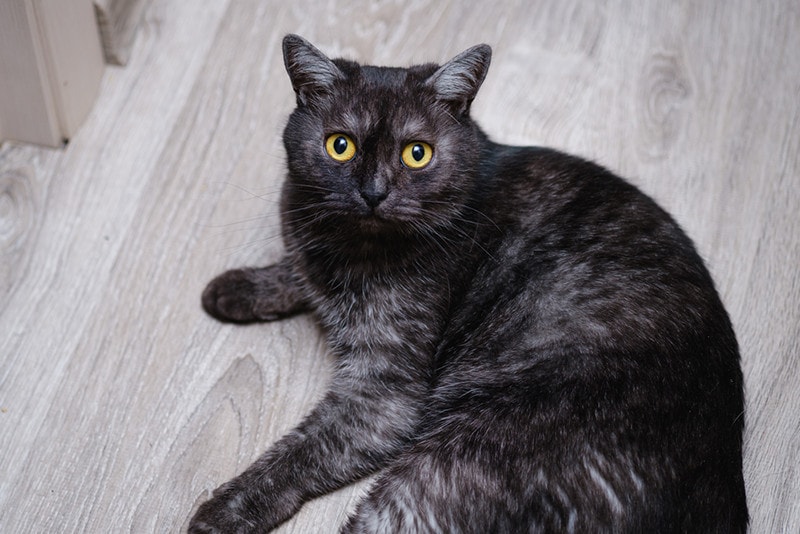
4. Some Scottish Folds Never Get Folded Ears
Because the gene mutation that causes the fold in a Scottish Fold’s ears is inherited, some Scottish Folds inherit either a “normal” gene (N) and a “folded” gene (SF), two N genes, or two SF genes. Because this gene is dominant, a Scottish Fold who inherits one or two SF genes from their parents will have folded ears. However, around 50% of a litter will have straight ears, inheriting two N genes.

Does Black Scottish Fold Make a Good Pet?
The black Scottish Fold is like a furry shadow that follows you everywhere! They are very family-oriented cats that adore their owners and love to curl up on a warm lap for petting. However, this also means that they are prone to separation anxiety and do best when they always have someone at home with them.
Scottish Folds are prone to a degenerative bone condition known as osteochondrodysplasia, which can render some cats immobile and in great pain if severe. However, many breeding practices now consider this and are working hard to ensure all Scottish Folds are kept as healthy as possible.
The black Scottish Fold is laid back, loves to play, and is friendly and mild-mannered. They aren’t talkative, so you won’t have to worry about upsetting your neighbors. They are suitable for families with respectful children, but be mindful that they must be handled carefully if they suffer from bone or joint deformities (particularly in their tails).
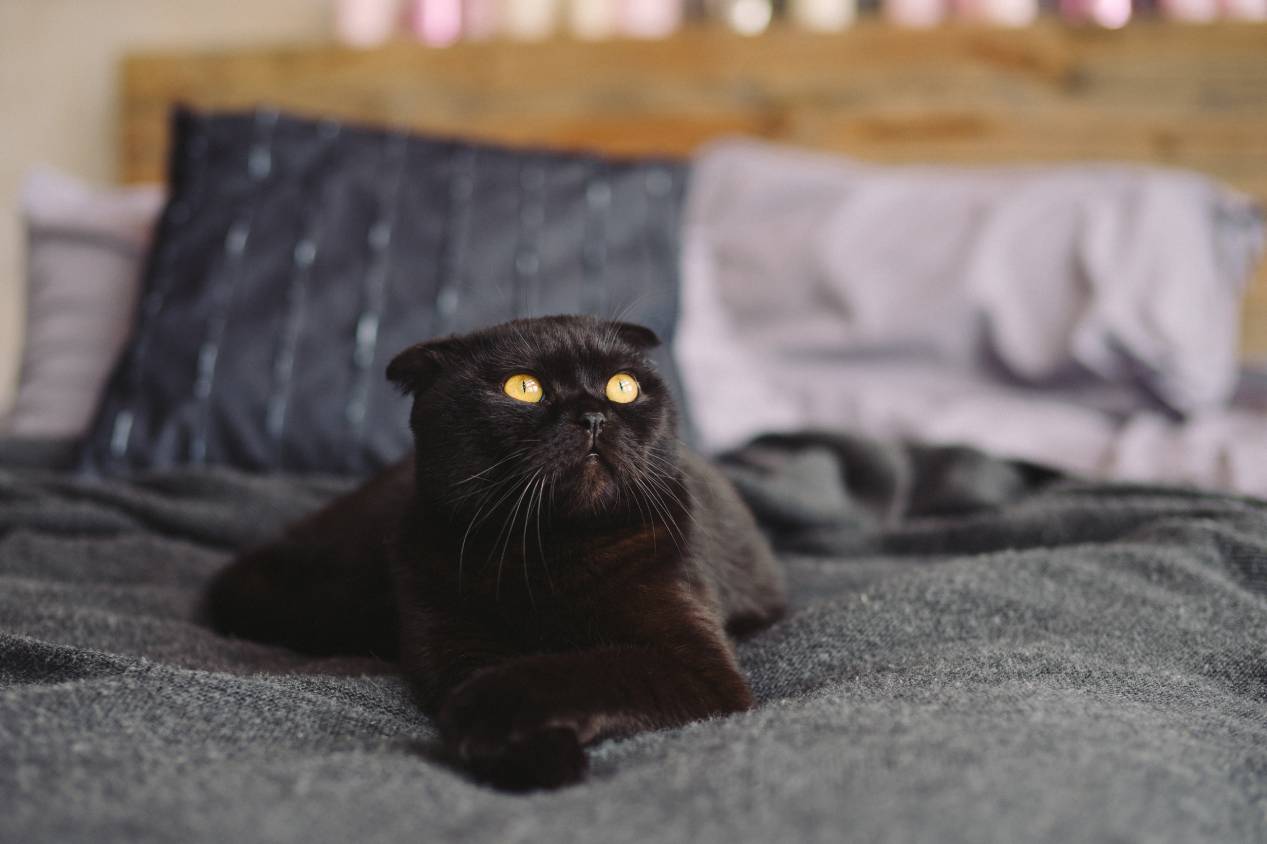

Conclusion
The black Scottish Fold is a beautiful feline, but it’s a controversial cat because of the breed’s potential problems. There is an ongoing debate over whether breeding Scottish Folds is ethical, and some places have banned their breeding and selling. However, in the US, the breed is still going strong, with dedicated breeders trying to isolate the fold gene and produce healthy cats who keep the owl-faced sweetness of their farm cat ancestors. Black Scottish Folds are magical and make loyal companions to any cat-loving home.
Featured Image Credit: Oporty786, Shutterstock
